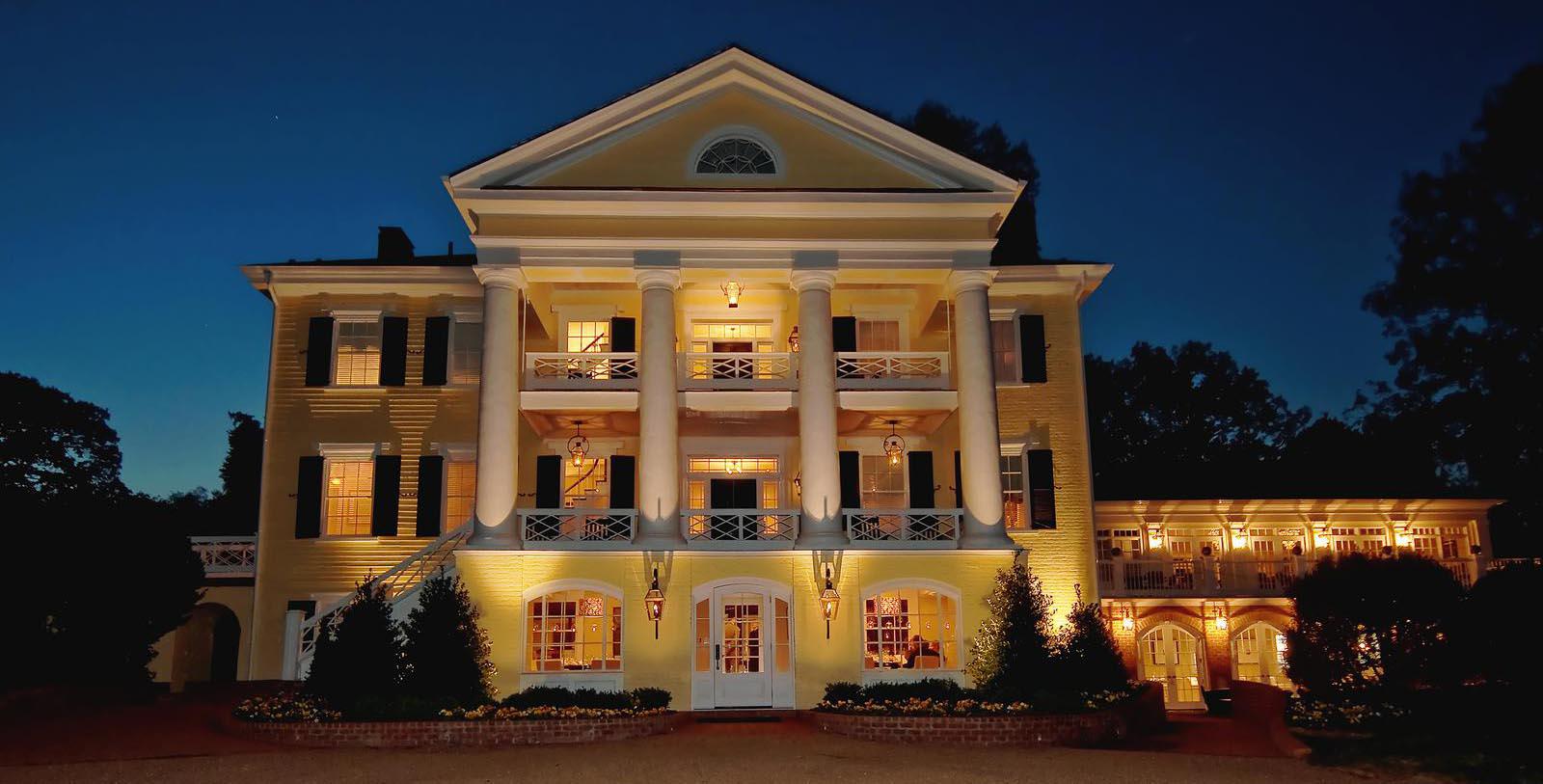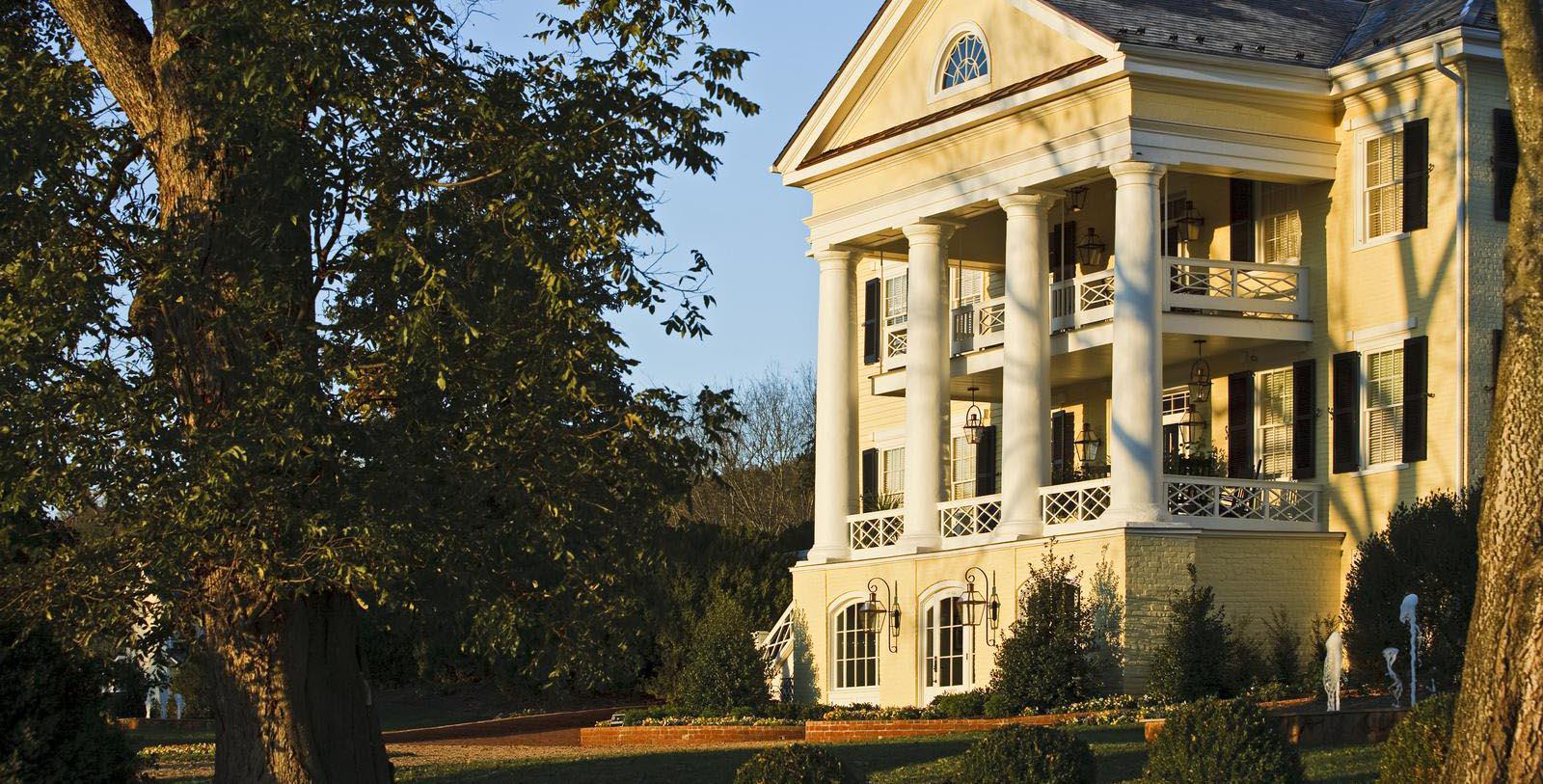Receive for Free - Discover & Explore eNewsletter monthly with advance notice of special offers, packages, and insider savings from 10% - 30% off Best Available Rates at selected hotels.
history
Discover the Inn at Willow Grove with its exquisite craftsmanship rendered by the same artisans chosen by Thomas Jefferson to build the University of Virginia.
Inn at Willow Grove, a member of Historic Hotels of America since 2017, dates back to 1778.
VIEW TIMELINEIn 1778, one of Virginia’s most prominent land surveyors named Joseph Clark constructed the future Inn at Willow Grove. (Clark’s reputation was so great that the widowed Dolly Madison even had Clark survey Montpelier estate prior to its sale in 1844.) Designed to serve as a farmhouse, it featured some of the best American-inspired Neoclassical architecture in the state. Nevertheless, the original house was then expanded upon during the mid-1800s. The Clark family specifically added a beautiful brick exterior, as well as a few Jeffersonian columns and hanging porches. Much of the work was completed by the same craftsmen that former President Thomas Jefferson used to develop the campus of the University of Virginia. The Willow Grove also saw some action during the American Civil War. Trenches and gun emplacements were developed near the house, and a cannon ball was found lodged in the manor house’s eaves many years ago. The location has since changed hands many times and has undergone a number of renovations. More recently, Willow Grove operated as a bed and breakfast for over 20 years before the current owners David and Charlene Scibal purchased the building in 2008. They subsequently began a massive, multimillion dollar top-to-bottom renovation that was completed some two years later. Nevertheless, many antebellum structures still exist on the grounds today, including the Schoolhouse, Smokehouse, Weaving House, Ash House, and Spring House. The Inn at Willow Grove is now a luxurious boutique hotel. It offers a Forbes Travel Guide four-star restaurant that features elegant "urban meets plantation" décor, gourmet farm-to-table cuisine, and gracious personal service. With 25 elegant guestrooms and suites in the manor house and surrounding cottages, The Inn at Willow Grove invites guests to escape, unwind, and indulge in luxury. Those amenities and services have convinced many guests that the Inn at Willow Grove provides nothing but the best in Southern hospitality and comfort. As such, this fantastic historic hotel continues to be one of the best places to vacation it all of Virginia. Located in the heart of Orange County, Virginia, the Inn at Willow Grove has been a member of Historic Hotels of America since 2017.
-
About the Location +
The Inn at Willow Grove is located within Orange County, one of Virginia’s most historic locations. The county itself was founded back during the 1730s, although the first European immigrants arrived in the area much earlier in 1714. They were a small band of German religious refugees that Governor Alexander Spotswood had invited to settle around a place he called “Fort Germania.” Over time, more people moved into the surrounding environs, prompting the Virginia General Assembly to form a new county government. Named after William IV, Prince of Orange—King George II’s son-in-law—Orange County quickly became one of Virginia’s most economically vibrant regions. Wheat and tobacco farms were soon ubiquitous throughout the area, giving rise to a prosperous agricultural sector that dominated the economy for generations. Railroads helped spur economic growth further by the mid-1800s, with local merchants transporting their goods along the Orange and Alexander Railroad and the Virginia Central Railroad. One of the places that saw the greatest growth as a result of the prosperity was Orange Court House, the predecessor to today’s town of Orange. Dozens of new municipal buildings opened across the town, including new churches, storefronts, and townhouses. The size of the settlement had grown so much that the state government even filed to have it officially incorporated. (The legislation would not pass until the 1870s, however).
Orange County’s economic and political prominence made it an important military target during the American Civil War. Countless skirmishes and raids occurred throughout the region, with some of the greatest attacks led by the likes of John Singleton Mosby and his band of partisans known as “Mosby’s Rangers.” Nevertheless, some major battles happened in the county, as well, specifically the Battle of Mine Run in 1863 and the Battle of the Wilderness in 1864. The Battle of the Wilderness in particular was the climactic moment of the war in the area, as more than 160,000 men inconclusively fought for three days inside the densely wooded terrain of the county’s eastern fringes. When the fighting finally stopped, many buildings in Orange Court House became a field hospital for wounded Confederate soldiers. But when the Union and Confederate armies were not actively warring against one another, Orange County served as a supply depot and resting point for the rebels. In fact, General Robert E. Lee encamped the Army of Northern Virginia around Orange Court House throughout the winter of 1863/1864. Some stories even attest that General Lee and his senior cavalry officer, General J.E.B. Stuart, regularly attended mass in Orange Court House for much of the season.
Perhaps Orange County’s most famous historical fact is that it was the home of former President James Madison for years. Known today as the “Father of the Constitution,” Madison’s ancestral home of Montpelier was located just five miles to the west of Orange Court House. Madison himself emerged as one of the most important Founding Fathers, serving in both the Virginia General Assembly and Continental Congress during the American Revolution. But Madison’s real rise occurred amid the Constitutional Convention, in which he helped ratify the U.S. Constitution alongside Alexander Hamilton and John Jay. Afterward, Madison served as one of the most vocal members in the U.S. House of Representatives. Among his greatest legislative accomplishments was his stewardship of the Bill of Rights, which enshrined personal freedoms and rights within the Constitution. He then served as Secretary of State under his close friend, President Thomas Jefferson, only to succeeded the latter as the 4th President of the United States from 1808 to 1817. Madison’s presidency featured some of its own hallmarks, including the creation of the Second Bank of the United States. But his policies also sparked the War of 1812, a conflict against the British Empire that sought to protect the America’s international reputation. Even though the war ended inconclusively, it created a shared national identity among Americans at the time. Cultural heritage travelers can experience Madison’s legacy for themselves by visiting Montpelier, which exists today as both a National Historic Landmark and a museum dedicated to his memory.
-
About the Architecture +
The Inn at Willow Grove’s exterior façade features a specific blend of American-inspired Neoclassical-style architecture known as “Jeffersonian.” As the name implies, the form emerged as a direct result of former U.S. President Thomas Jefferson’s experimentation with architectural design. Well before he became a politician, Jefferson studied a variety of topics, ranging from science to the law. Architecture was also among the many other scholastic fields that he pursued, although he never received a formal education on the subject. Instead, Jefferson studied a variety of books, specifically Andrea Palladio’s The Four Books of Architecture. Palladio’s influence proved to be significant, as Jefferson applied his Neoclassical concepts throughout much of his own work. But Jefferson also applied his own unique perspectives to his designs, drawing additional inspiration from the likes of English architect James Gibbs, as well as several French aesthetics commonly seen in Paris at the time. As such, Jefferson created a unique iteration of Neoclassical-style architecture that he used frequently throughout his life. His designs still borrowed heavily from Palladio, namely his embrace of “classical” orders and symmetrical floorplans. Furthermore, Jefferson called for the installation of rounded front porticos that possessed a balustraded flat roof, as well as front porches crowned with a classical pediment. Perhaps the most striking feature of Palladio’s that Jefferson used were massive columns that displayed some combination of Corinthian, Doric, or Ionic capitals. But Jefferson broke with Palladio primarily through his employ of different geometrical shapes, namely octagonal forms. He subsequently designed a number of buildings throughout Virginia with his unique blend of Neoclassical architecture, with his most prominent examples being Poplar Forest, Monticello (his home), and the original campus of the University of Virginia.































